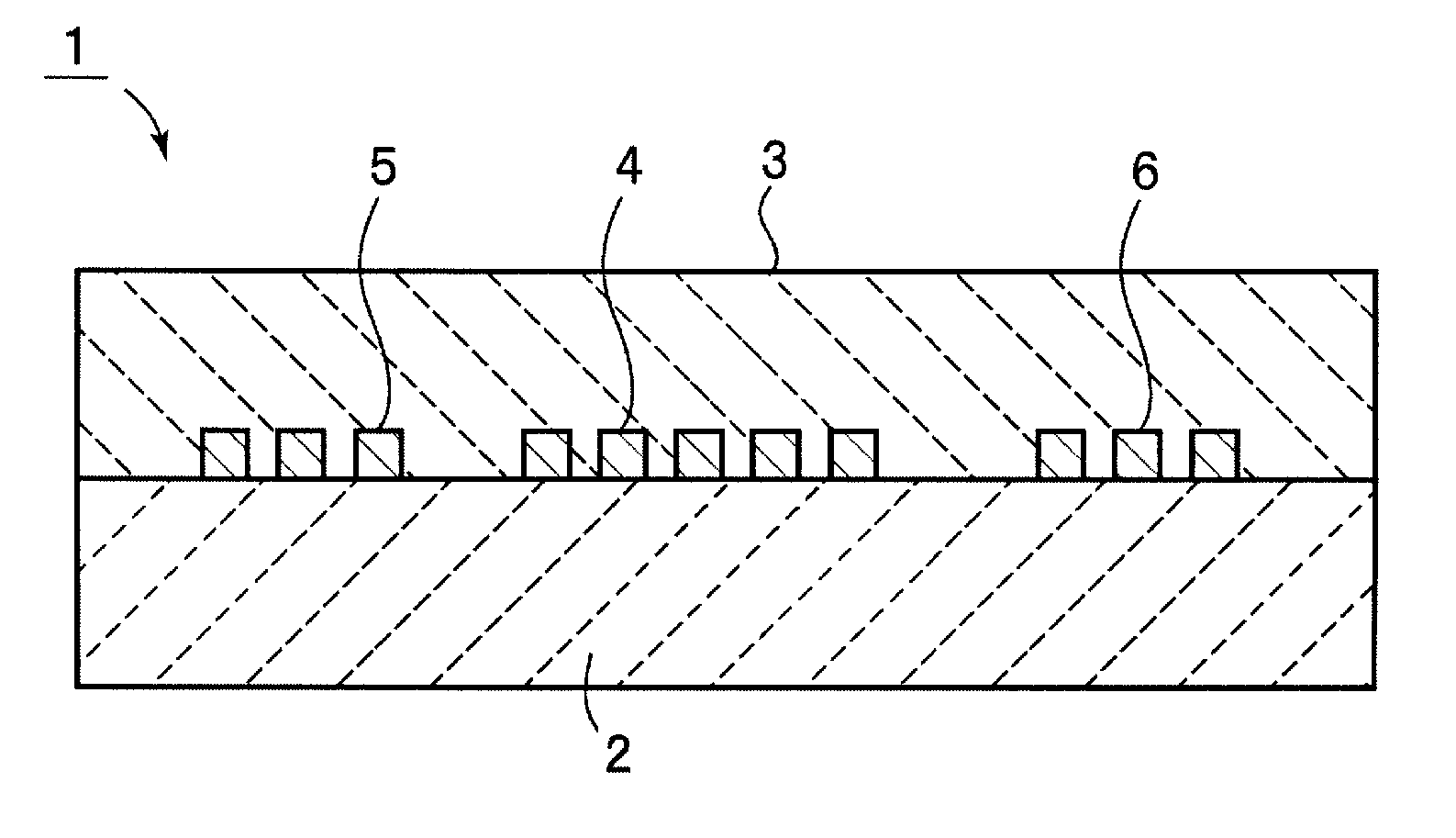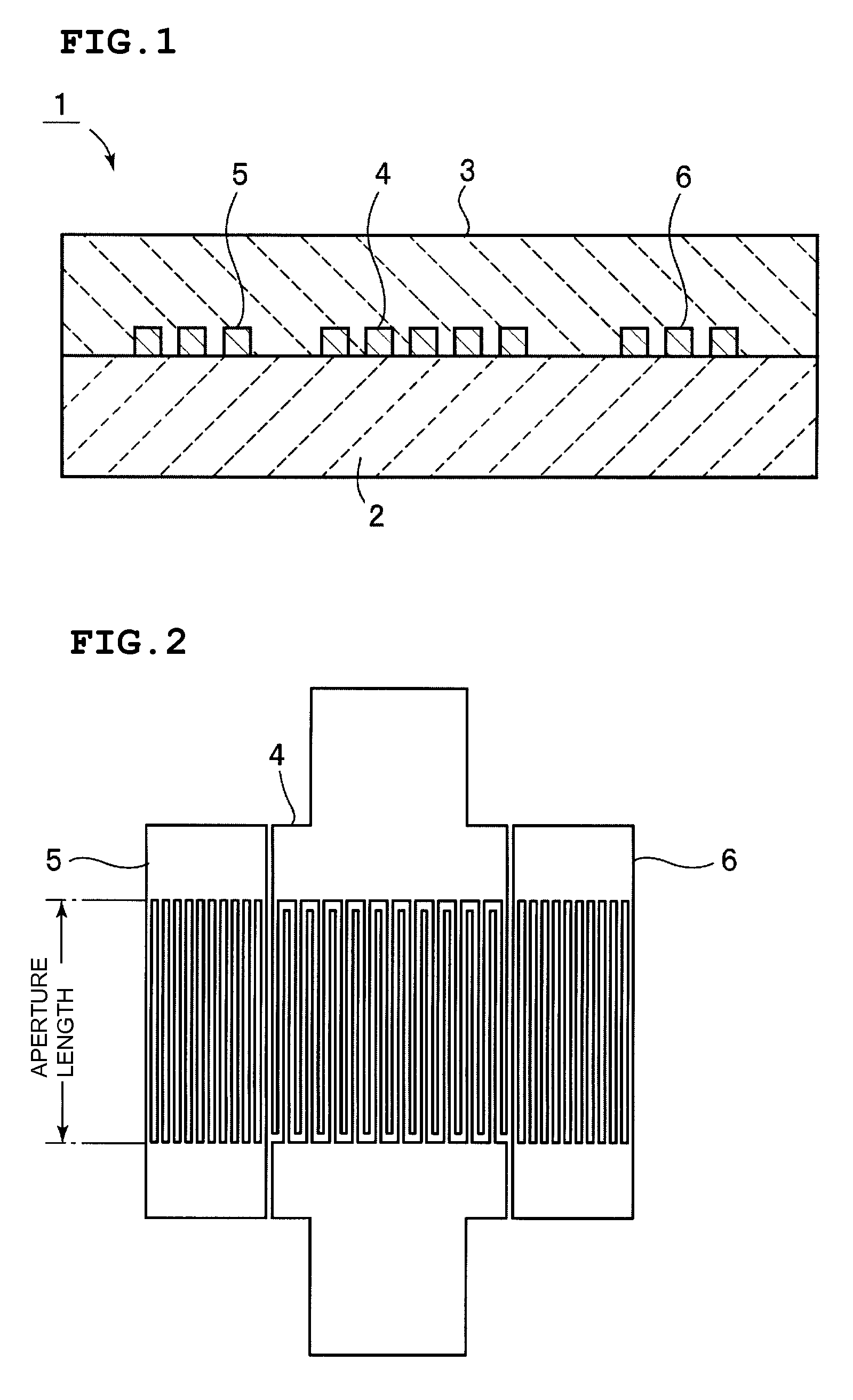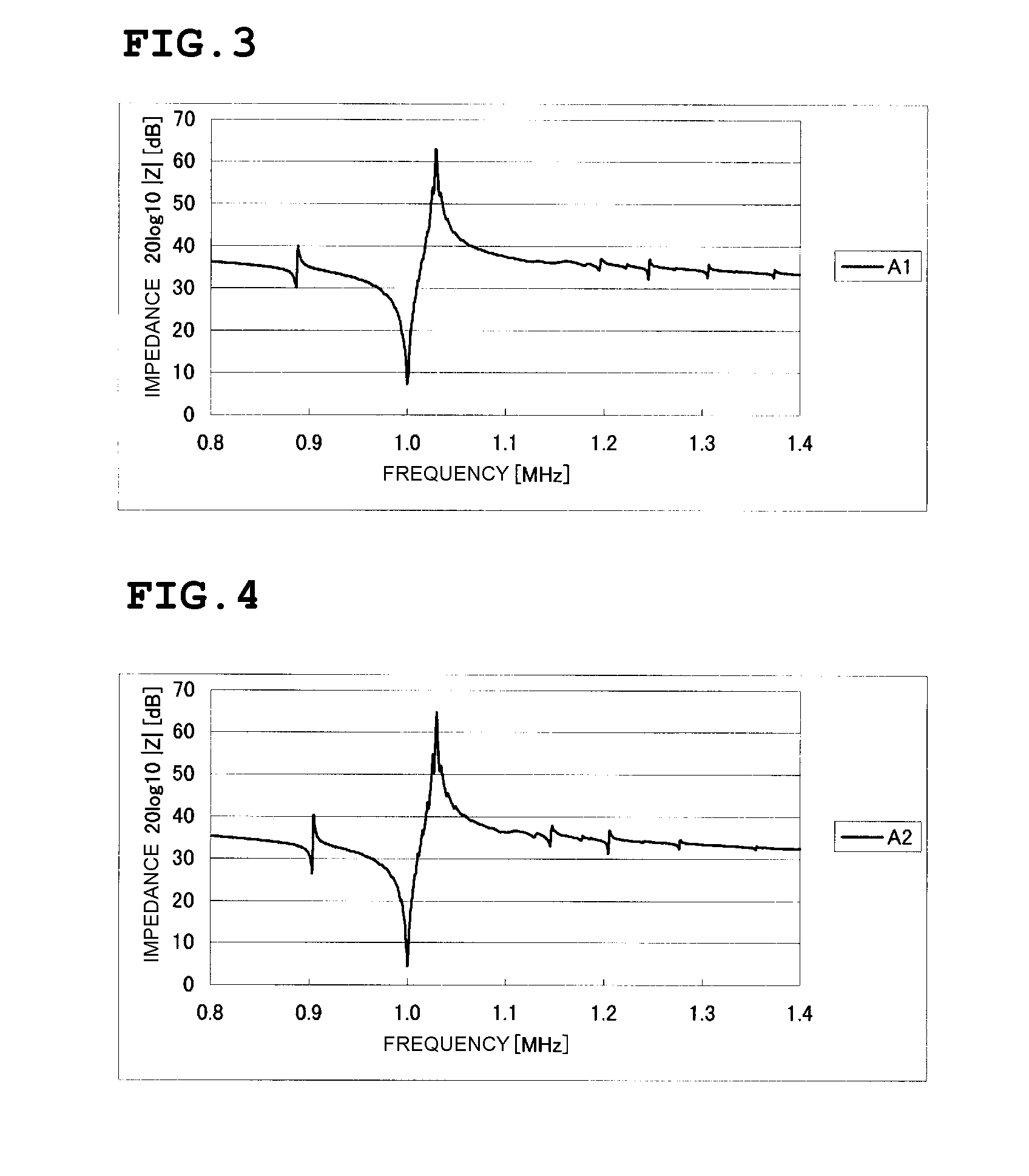Boundary acoustic wave device
a acoustic wave and device technology, applied in piezoelectric/electrostrictive devices, device material selection, piezoelectric/electrostrictive devices, etc., can solve the problems of complex design of electrodes, increased cost of surface acoustic wave devices, and degraded resonant, etc., to achieve small power flow angle, small propagation loss, and large electromechanical coefficient
- Summary
- Abstract
- Description
- Claims
- Application Information
AI Technical Summary
Benefits of technology
Problems solved by technology
Method used
Image
Examples
example 1
[0177] A 128° rotated Y plate X-propagation LiNbO3 substrate, that is, having Euler angles (0°, 38°, 0°) was prepared as the piezoelectric substance 2. On this LiNbO3 substrate, as an adhesion layer, a NiCr film was formed by an evaporation method. Next, on this adhesion layer, a Au film was formed by an evaporation method, followed by patterning using a lift-off method, such that the IDT 4 and the reflectors 5 and 6 were formed. In addition, a SiO2 film was formed by an RF magnetron sputtering method at a film-forming temperature of 200° C. so as to cover the IDT 4 and the reflectors 5 and 6.
[0178] The number of electrode finger pairs of the IDT 4 and the number of electrode fingers of each reflector were set to 50.5 and 51, respectively.
[0179] In addition, the crossing width of the electrode fingers of the IDT 4 was set to 30 λ. On the other hand, an aperture length A (see FIG. 2) of the reflectors 5 and 6 was set to 30.5 λ. In this example, λ was a placement period of the elect...
example 2
[0189] In Example 1, the spurious response was generated by the SH type boundary acoustic wave at a lower frequency side than that of the response by the Stoneley wave. In Example 2, this spurious response was intended to be suppressed.
[0190] That is, in order to suppress the spurious response by the SH boundary acoustic wave, the relationships of the Euler angle of a LiNbO3 substrate with the acoustic velocity V, the electromechanical coefficient k2, the propagation loss α, the temperature coefficient of frequency TCF, and the power flow angle (PFA) of the Stoneley wave and the SH type boundary acoustic wave were obtained. The calculation was performed based on a method disclosed in “A Method For Estimating Optimal Cuts and Propagation Directions for Excitation and Propagation Directions for Excitation of Piezoelectric Surface Waves” (J. J. Campbell and W. R. Jones, IEEE Trans. Sonics and Ultrasonics, Vol. SU-15, No. 4 (October 1968) pp. 209 to 217). In the case of a free boundary...
example 3
[0204] A 120° rotated Y plate X-propagation LiNbO3 substrate, that is, having Euler angles (0°, 30°, 0°), was prepared as the piezoelectric substance 2 using the calculation method described in Example 2, and taking into account easy thin film formation and a function of counteracting the TCF of LiNbO3, a SiO2 film was selected as the dielectric substance 3. By forming electrodes using electrode materials having various densities, boundary acoustic wave devices were formed. Subsequently, the relationships of the electrode thickness of each of the boundary acoustic wave devices thus formed with the acoustic velocity, the propagation loss α (dB / λ), the electromechanical coefficient k2 (%), and the temperature coefficient of frequency TCF of the Stoneley wave were obtained. The results are shown in FIGS. 70 to 116. It is noted that the power flow angle PFA was zero under all the conditions.
[0205] In the 120° rotated Y plate X-propagation LiNbO3 substrate, the acoustic velocity of a lo...
PUM
 Login to View More
Login to View More Abstract
Description
Claims
Application Information
 Login to View More
Login to View More - R&D
- Intellectual Property
- Life Sciences
- Materials
- Tech Scout
- Unparalleled Data Quality
- Higher Quality Content
- 60% Fewer Hallucinations
Browse by: Latest US Patents, China's latest patents, Technical Efficacy Thesaurus, Application Domain, Technology Topic, Popular Technical Reports.
© 2025 PatSnap. All rights reserved.Legal|Privacy policy|Modern Slavery Act Transparency Statement|Sitemap|About US| Contact US: help@patsnap.com



